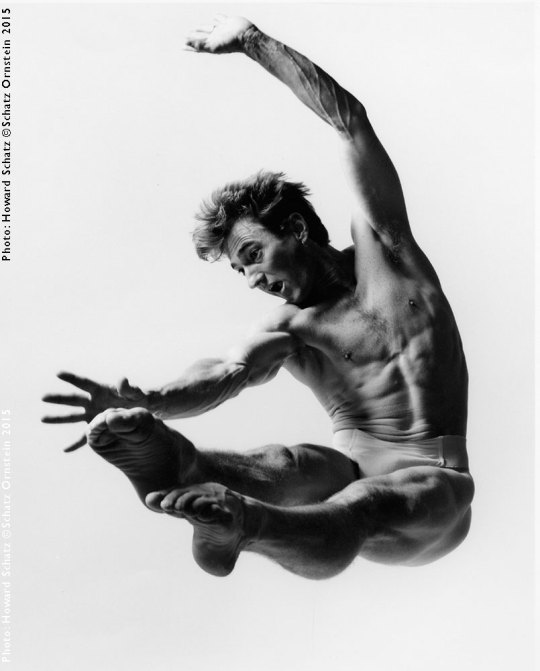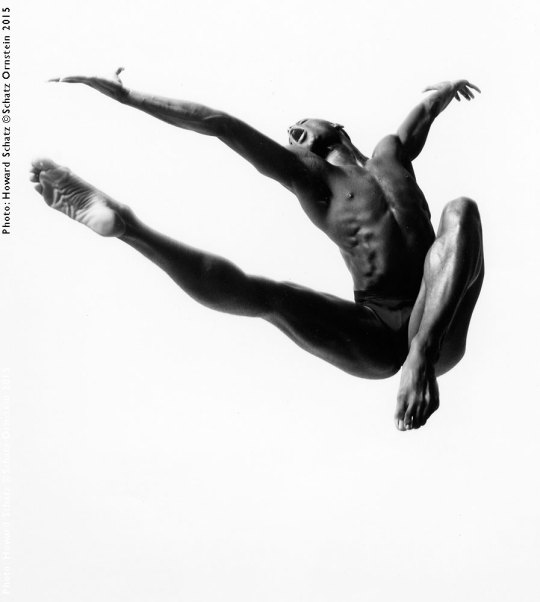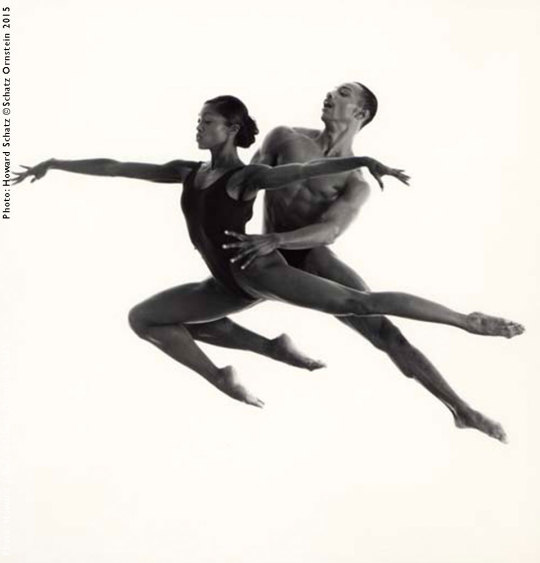BLOG #128 1/22/2016

As with sports photography, dance photography usually depends on the concept of capturing the “decisive moment.” When a dancer leaps, that moment comes in the split second when motion seems to stop and the dancer is apparently still, neither rising nor falling.
When I photograph great dancers, my idea is often to capture that moment. When I started making photographs of dancers, I found that after five or ten jumps, any dancer would stop and say, “I have to perform tonight.” And the leaping stopped cold, with only a few images made, often none yet wonderful.
In order to further explore and experiment, looking for creative inventions, I needed to figure out a way to extend the sessions in the air. The answer turned out to be simple, and successful. In this photo of the dynamic The San Francisco Ballet dancer David Palmer, I used a small trampoline to help him do hundreds of jumps.
The trampoline let him, and other dancers – all perfectly capable of dramatic leaps with no artificial help – rise and land softly, then do it again and again. For safety, I told them not to jump really high, that there would be sufficient time for them to develop an interesting “form” and for me to make a photograph. Performing for my camera and using a trampoline a dancer can leap countless times, giving me a chance to vastly increase my search for something surprising, hyperkinetic, magical and magnificent.
Eric Bourne, Parsons Dance Company

Charissa Barton, Parsons Dance; here I had my camera, and self, positioned on the floor at the edge of the trampoline

Askia Swift, who danced with both The San Francisco Ballet, as well as with the Alvin Ailey American Dance Theater

Although challenging, even two dancers can “perform” on a trampoline.
From Alvin Ailey American Dance Theater, Vikkia Lambert and Uri Sands.

And, finally, Steve Vaughn, Parsons Dance Company, note he takes off from the trampoline and seems to be flying off, to the side. Actually, he jumped straight up and came straight down. As he was airborne I moved my camera slowly to the left after he took off making it appear that he flew off to the right.

In over 25 years of using a trampoline to photograph hundreds of dancers and athletes, I have witnessed only one accident. A dancer was showing off more for his company than for my camera. There were about 15 other dancers in the studio that day, all excitedly cheering him on! This got him jumping so high that he almost touched the studio’s 12-foot ceiling. I warned him immediately not to jump so high, that it was both dangerous and unnecessary to get good images, but he didn’t listen to me. (This was unusual for a dancer not to follow an instruction.) He kept it up, to the cheers of colleagues I should have told not to encourage him. Finally, he went up high and came down on the metal rim of the trampoline, twisting an ankle and putting him out of performing for six weeks.
If you would like to read previous blogs, you can do so here.
To view more of my work, visit my website.
We are so pleased to announce that Schatz Images: 25 Years is the
Winner of the 2015 International Photography Award for Book of the Year;
Winner of The Best Photobooks of the Year, American Photo, 2015; and the
Gold Medal, One Eyeland, first Place Award.
I am teaching a 4-day workshop the Palm Springs Photo Festival this Spring (end of April). The workshop is called: “THE INSPIRED EYE: Experimentation, Exploration & Discovery: A Search for the Unexpected.” http://2016.palmspringsphotofestival.com/project/howard-schatz/